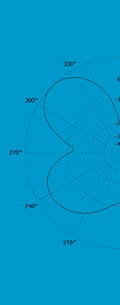 All materials on this site © PAR Electronics, Inc.
All materials on this site © PAR Electronics, Inc.
PAR Electronics, Inc.
P.O Box 645
Glenville, NC 28736
Voice: 828-743-1338
Fax: 866-304-8479
Email us if you have questions or comments about this site.
Site by
Pinnacle Web Design
Vintage Radio Restoration - Pierson Holt KE-93 Mobile Receiver
Please click each image below to enjoy a larger view.
Pierson Holt was located in Venice, California and started by Karl Pierson, W6BGH.
One of his earlier companies manufactured a fixed station receiver, the KP-81, but the only receiver to come out of Pierson Holt was a fabulous mobile receiver, the KE-93.
I became the owner of S.N. 3043 and the matching S.N. power supply/speaker/ S meter in a trade. The small enclosure (9.5L X 6W X 5.25H) contains 13 tubes.
One of the unique features is the band switch design was borrowed from the early channel switching in television sets: a turret with snap in modules (see photos). This eliminates a complex bandswitch, ensures extremely short leads and much easier repair. On this receiver, the only obvious issue was that I could not align the 80M L.O. I added a small NPO disc cap to the L.O. board and all was well. The usual detailed cleaning and DeOxit Gold on all tubes, tube sockets, switches and pots was performed.
The die cast front panel is a bit unusual in that the graphics for the knobs, while embossed in the mold, are a bit hard to read as there is no paint on them. Some users have highlighted the lettering with paint pencils. In the manual, Pierson says that a lot of planning and effort went into the front panel placement of the controls to make then most useful by the car driver. In addition the awning on the front panel is open at the bottom thus allowing light from the 2 bulbs to not only illuminate the round dial scale but also the front panel knobs.
All of the knobs are a beautiful aluminum — a bit reminiscent of some of the Gonset offerings.
Besides the main tuning knob, there is a Vernier tuning making for easy CW and SSB tuning. Other controls are Mode, BFO, Volume, ANT Trim, Squelch, and Sensitivity.
The accessory power supply contains a speaker and an S meter vacuum tube along with the S meter, bringing the tube total to an impressive 14.
Band coverage is AM broadcast and then the standard 160M - 10M bands.
In restoration, I had the cabinets bead-blasted and painted in a beautiful powder coat hammertone finish. The vent plugs and exterior hole plugs were quite rusty and they were replaced with new identical units. The labels on the back of the receiver cabinet were metal and in pretty rough shape. I scanned them and made what I think are near perfect replicas using self-adhesive vinyl media (see before and after photos). I, of course, retain the originals.
The power supply front panel was made from very soft aluminum. As a result, it was badly scratched and dented. A new front panel (actually the back side of the original front panel) was made and water slip decals used to replace the original labels and silk screen. Multiple clear coats and wet sanding removes the edges of the decals.
One interesting note is that when I first plugged the set in (after looking at the health of the can electrolytic), the fuse blew when I attached my antenna. A bit of testing revealed that one side of the AC line was grounded. This made no sense as the power supply is classic transformer operated. Some more sleuthing led to the discovery that a previous owner had added a solder lug and a ground wire (that all appeared original) to one side of the AC at the receiver power socket. Given that the AC line cord is 2 pin, unpolarized, this could be disastrous. I cannot imagine why this was done. I also beefed up the PS to receiver plugs to make them more durable.
There is perhaps more electrical restoration that could be done, but the receiver plays wonderfully and in my opinion is 2nd only to the Morrow Twins (see their photos also on my site).
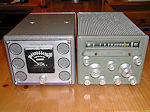 |
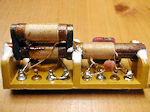 |
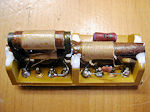 |
 |
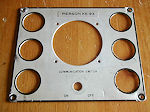 |
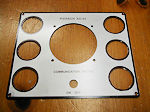 |
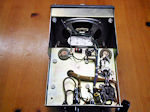 |
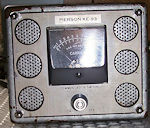 |
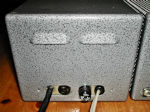 |
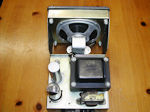 |
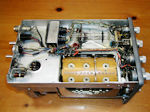 |
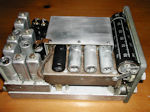 |
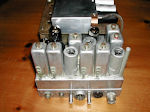 |
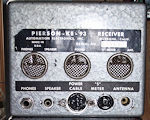 |
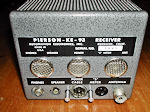 |
 |
 |
 |
